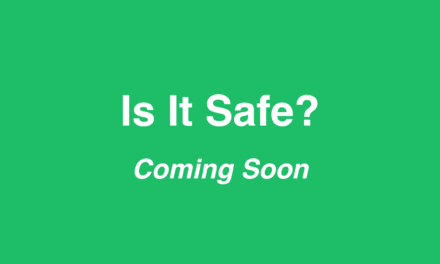If you’re like most people, you’ll quickly pick a side or a point of view when you encounter an issue. We discussed several factors that often influence this process in our article, Picking a Side and Influencing Others. One key factor is the media, such as television, a newspaper, or a web site. So a key question, then, is can you trust the media? Sadly, too often the answer is “No”. Sometimes an issue comes along that a very simple internet search would reveal to be false. Nevertheless, too often major media outlets will carry the story without caveat. Let’s look at an example.
Apple and the Foxconn Suicides

Photo by iphonedigital
Back in middle of 2010, there were reports of suicides at Foxconn in China. Foxconn is a contract manufacturer for many consumer electronics companies including Apple, Dell, HP, Sony, and many others. Because of the high profile Apple has among consumers, the resulting media frenzy featured headlines focusing mostly on Apple and the suicides at one of its major suppliers. Typically they reported fourteen suicides at Foxconn over five months out of 420,000 employees at the manufacturing plants involved.
The position of most articles was one of outrage, that this was a disaster, and that Apple must do something about it. Every suicide is a tragedy, and we are morally bound to take reasonable actions to prevent them where we can. However, almost nobody asked the first question that came to my mind at the time: Is 14 suicides in five months out of a population of 420,000 a lot? After a couple of minutes searching the internet, I found a list of countries by suicide rate at Wikipedia (The list of countries by suicide rate at Wikipedia page has been updated since my first search. At the time, the answer was 22 suicides per 100,000 people in China.).
Data Analysis

It turned out that, at the time, about 22 out of every 100,000 people committed suicide each year in China (Note, though, that statistics in China about suicide are somewhat controversial). For comparion’s sake, the current rate for the USA is about 12.1 per 100,000 per year.
In the case of Foxconn, we had 14 suicides in just five months out of a population of 420,000. That works out to eight suicides per 100,000 per year((That’s 14/5*12/(420,000/100,000), which equals 8. )). That’s a lot better than the 22 in the general population.
(Note that when we look at the whole year, there were 18 suicides in a population of about 420,000. That equates to a rate of about 4.5 per 100,000 per year. It turned out that the 14 suicides in five months was a statistical cluster that didn’t represent the entire year. That, in itself, is a lesson to keep in mind. Sometimes alarming data is merely an unusual cluster. It takes time to find this out.)
So, all this fuss was over a company that, at 8 suicides per 100,000 people per year, was substantially lower (better) than the rate of 22 in the general population. The question to be asked, then, was how is Foxconn doing so well? Instead, we were treated to reports of disaster (To really get to the bottom of the matter, we’d need to look much more closely. For example, the population at Foxconn is younger than the general population, it’s mostly an urban population, and it’s working at industrial jobs. Ideally, we’d look at the suicide rates for these populations. Also, the numbers we’ve used vary from one source to another.).
Clearly, most media outlets didn’t spend five minutes to see if there was a real story here.
Aftereffects
Despite the unwarranted alarm in the media, it certainly had an effect. Apple initiated a report on its suppliers that it continues to issue regularly. The report helps to ensure that overtime is reasonable, workers are not underage, and so on. Regular audits are intended to keep its suppliers honest.
So, we might ask, if good was done, what’s the big deal? Well, the problem is that Apple spent significant resources reducing a suicide rate that was already significantly better than the general population in China. Instead, shouldn’t we have tried to help those most at risk, to save the most lives? We, as a society, should allocate our scarce resources in ways that do the most good. That requires more critical thinking skills than we see among the media, and indeed the general population.
Can You Trust the Media?
 The majority of the mainstream media got the report wrong. However, there were reports in the media that got it right. For example, this story in the The New York Times mentioned suicide rates in China. Also, this story in Forbes mentions suicide rates at the bottom of the first page of the two-page article. Finally, StatsChat, a great internet site providing analysis of current news articles had, as you might expect, a thoughtful analysis.
The majority of the mainstream media got the report wrong. However, there were reports in the media that got it right. For example, this story in the The New York Times mentioned suicide rates in China. Also, this story in Forbes mentions suicide rates at the bottom of the first page of the two-page article. Finally, StatsChat, a great internet site providing analysis of current news articles had, as you might expect, a thoughtful analysis.
In the end, you need to treat media claims with a grain of salt. They’re an important source of information, but they’re not always accurate. Some media organizations, as we’ve seen, are better than others. So, don’t jump to conclusions based on what you see in the media. Wait for more detail. Remain “undecided” in the meantime. That’s a really big change for most people.
So Who Can You Trust?
 As we’ve seen, the media is a mixed bag. Some institutions provide an accurate analysis based on the facts available to them. Others write emotional articles that are really opinion pieces masquerading as news. So, you need to see a track record before you can trust them.
As we’ve seen, the media is a mixed bag. Some institutions provide an accurate analysis based on the facts available to them. Others write emotional articles that are really opinion pieces masquerading as news. So, you need to see a track record before you can trust them.
You now have one test to apply. If they reported on the Apple Foxconn suicide scandal, what position did they take? You can also look at reputations–are they aligned politically with particular viewpoints that might influence reporting? Do they have financial independence and freedom from influence, even advertisers? Sadly, this is becoming rare.
Another source of information is experts in the field. Recall that the site mentioned above, StatsChat, had an astute analysis. That wasn’t surprising, given their expertise in analyzing statistics. You can still encounter bias, but experts are more likely to be right.
In the end, there is no simple way to trust sources of information without spending inordinate amounts of time checking them out. Instead, most of us rely on information from trusted friends and family, news organizations, and other institutions. Since none of these are faultless, the only reasonable position to take is one of healthy skepticism. After all, more facts may come out, or “facts” eventuallly proven wrong or misleading. In that case, you may need to change your position. Say goodbye to certainty and become comfortable with incomplete data.










Recent Comments